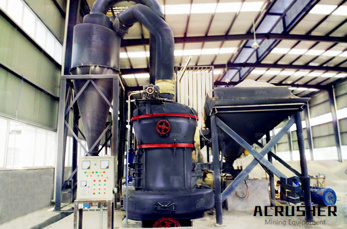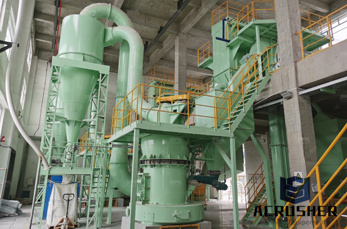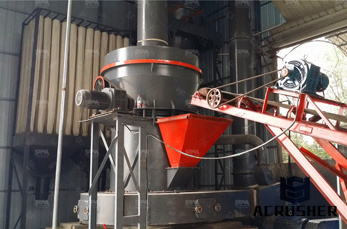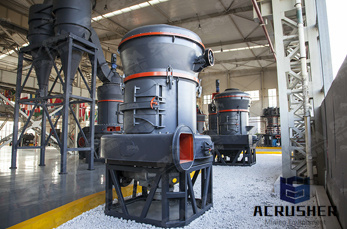What is the chemical composition of limestone Answers
Mar 26, 2013· The colours of limestones vary depending on their chemical composition. An iron content to limestone can give a tinge of iron oxide (rust) colour. The exact chemical composition .
 WhatsApp)
WhatsApp)
Mar 26, 2013· The colours of limestones vary depending on their chemical composition. An iron content to limestone can give a tinge of iron oxide (rust) colour. The exact chemical composition .

The chemical composition of pure limestone approaches the theoretical composition of calcite (56 percent CaCO and 44 percent CaCO 2). Limestones in which the content of MgO is between 4 and 17 percent are called dolomitic limestones. As the magnesium content increases, limestones pass through a series of intermediate varieties into the ...

66 Experiment 4 • Quantifying the Composition of Limestone 4Expt. • Long pants, closedtoed shoes, and shirts with sleeves must be worn at all times. Clothing is expected to reduce the exposure of bare skin to potential chemical splashes.

What is Breccia? Breccia is a term most often used for clastic sedimentary rocks that are composed of large angular fragments (over two millimeters in diameter). The spaces between the large angular fragments are filled with a matrix of smaller particles and a mineral cement that binds the rock together.

Limestone has numerous uses: as a building material, an essential component of concrete (Portland cement), as aggregate for the base of roads, as white pigment or filler in products such as toothpaste or paints, as a chemical feedstock for the production of lime, as a soil conditioner, or as a popular decorative addition to rock gardens

ANALYSIS OF LIMESTONE INTRODUCTION. Limestone is usually described as rock made from calcium carbonate, CaCO 3, but in fact most limestone rock contains significant amounts of magnesium, silicates, manganese, iron, titanium, aluminum, sodium, potassium, sulphur (as sulphides or sulphates) and this experiment, you will analyze a sample of limestone to find how much calcium .

Start studying Physical Science Chapter quiz #1. Learn vocabulary, terms, and more with flashcards, games, and other study tools. ... The most abundant chemical sedimentary rock is a. limestone b. dolomite c. granite d. rock salt. a. limestone. ... 5. a definite chemical composition that .

Limestone is extracted from quarries or mines. Part of the extracted stone, selected according to its chemical composition and optical granulometry, is calcinated at about 1,000 °C (1,830 °F) in different types of lime kilns to produce quicklime according to the reaction:

Pure limestone is made up of two component minerals: calcium carbonate and calciummagnesium carbonate. The chemical formula for calcium carbonate is CaCO3. The chemical formula for calciummagnesium carbonate is CaMg(CO3)2. Calcium carbonate is commonly known as calcite,and calciummagnesium carbonate is commonly known as dolomite.

Mineral and Chemical Composition of Pure Limestone wt.% wt.% wt.% wt.% wt.% ratio wt.% wt.% wt.% ratio wt.% wt.% wt.% ratio wt.% wt.% wt.% ratio wt.% Calcite Dolomite CaCO3 MgCO3 CaCO3/MgCO3 CaO MgO CaO/MgO Ca(OH)2 Mg(OH)2 Ca(OH)2/Mg(OH)2 Ca Mg Ca/Mg CO2 Prepared by Missouri Department of Natural Resources, Division of Geology and Land Survey, 2011

Fig 1 Limestone and dolomite. The limestone from the various deposits differs in physical chemical properties and can be classified according to their chemical composition, texture and geological formation. Limestones from different sources differ considerably in chemical .

Limestone is a very common sedimentary rock consisting of more than 50% calcium carbonate. Although it occurs in many different forms, its origins can be traced back to either chemical or biochemical processes that occurred in the geological past, .

Apr 25, 2017· Physical Characteristics of Limestone ... This combination of chemical and mechanical weathering makes limestone very vulnerable to deterioration when exposed to the atmosphere. Porosity and Fractures. Limestone formed through the accumulation of shells and skeletal material has a high initial porosity a term referring to the voids between ...

The limestone can be a soft chalky material with microfossils, a hard recrystallized mass, a grainy sandlime mass, or a mass of fossil corals, urchins and shells. In some areas a chemical process converted the limestone to dolomite, which is characterized by a greater proportion of magnesium in the mineral composition.

In this lesson, learn about limestone, a calcium carbonaterich chemical sedimentary rock. There are several varieties, including fossil containing rocks, which can be found all over the world.

The chemical and physical composition of limestone. Calcite is a form of calcium carbonate with the chemical formula CaCO other words, calcite is composed of a basic structure of one atom of calcium, one atom of carbon and three atoms of oxygen.

5. Characterisation of limestone and lime Limestone Composition The main component of limestone is calcium carbonate (CaCO3), also known as calcite, which is formed by the compaction of the remains of coral animals and plants on the bottoms of oceans. It varies from a soft white substance (chalk) to a very hard substance (marble).

Limestone composition and reactivity are critical factors that determine the performance of limestonebased wet flue gas desulfurization systems. Limestone quality affects sulfur dioxide (SO2 ...

Chemical weathering, on the other hand, is an actual change in composition as minerals are modified from one type to another. Many, if not most of the changes are accompanied by a volumetric increase or decrease, which in itself further promotes additional chemical weathering.

Limestone, as used by the minerals industry, is any rock composed mostly of calcium carbonate (CaCO 3). Although limestone is common in many parts of the United States, it is critically absent from some. Limestone is used to produce Portland cement, as aggregate in concrete and asphalt, and in an ...

chemical composition of the mineral dolomite is calcium magnesium carbonate [CaMg(CO 3) 2]. The minerals calcite and dolomite both have CO 3 as part of their chemical formulas. CO 3 represents an electrically charged group of atoms known as the carbonate ion. Generally, limestone and dolomite rocks are not made up entirely of cal cite or dolo mite.

the chemical name for limestone is Calcium Carbonate Chemical formula is CaCo3 Calcium carbonate, CaCO3. ... The chemical formula is representative for the chemical composition of a chemical .

Jun 23, 2013· Limestone: The Calcium Carbonate Chemical Sedimentary Rock. Limestone is used in a wide variety of products – it is one of the most widely used rocks. . is the same chemical composition as calcite but has a different crystal form. .. Standards and requirements for limestone use are rising, and a greater . »More detailed

In this lesson, learn about limestone, a calcium carbonaterich chemical sedimentary rock. There are several varieties, including fossil containing rocks, which can be found all over the world.
 WhatsApp)
WhatsApp)